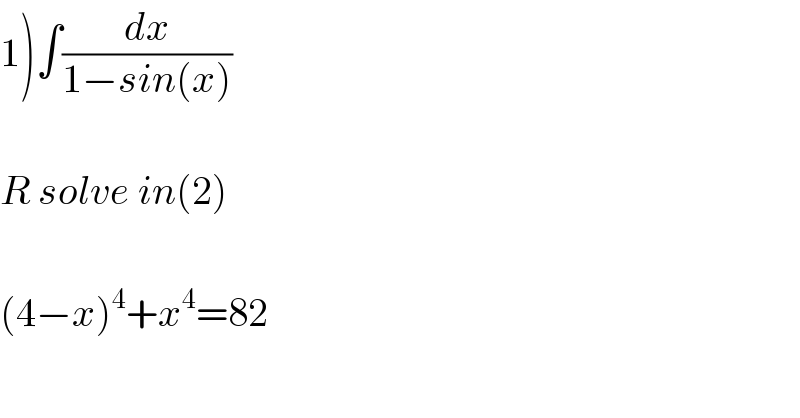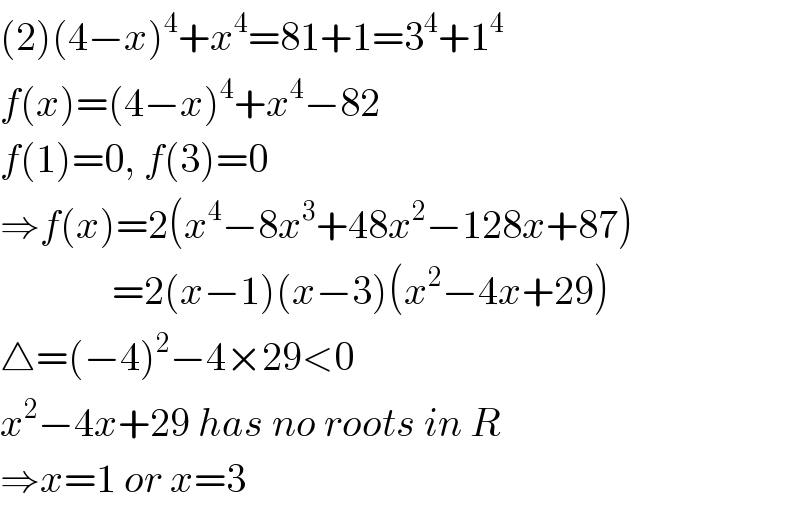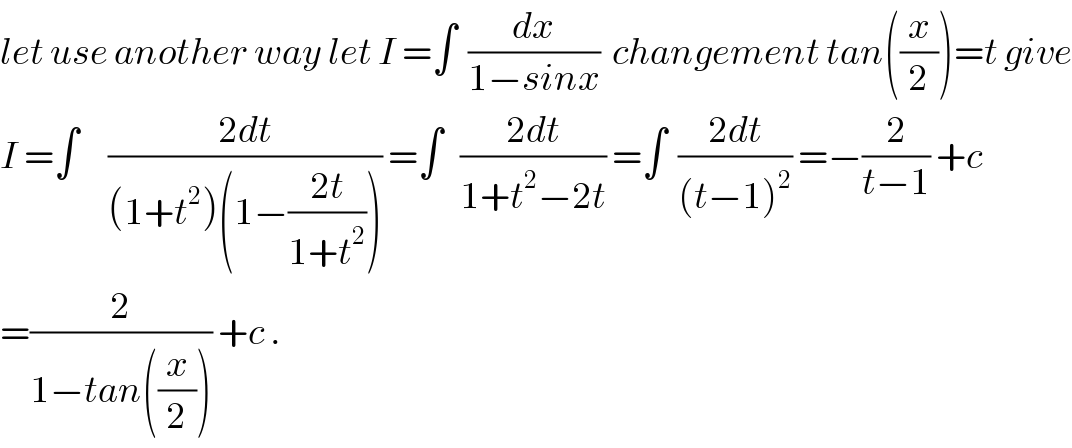
Question and Answers Forum
Question Number 62754 by aliesam last updated on 24/Jun/19

Commented by Tony Lin last updated on 25/Jun/19

Commented by mathmax by abdo last updated on 25/Jun/19

Answered by Hope last updated on 25/Jun/19

| ||
Question and Answers Forum | ||
Question Number 62754 by aliesam last updated on 24/Jun/19 | ||
 | ||
Commented by Tony Lin last updated on 25/Jun/19 | ||
 | ||
Commented by mathmax by abdo last updated on 25/Jun/19 | ||
 | ||
Answered by Hope last updated on 25/Jun/19 | ||
 | ||
| ||